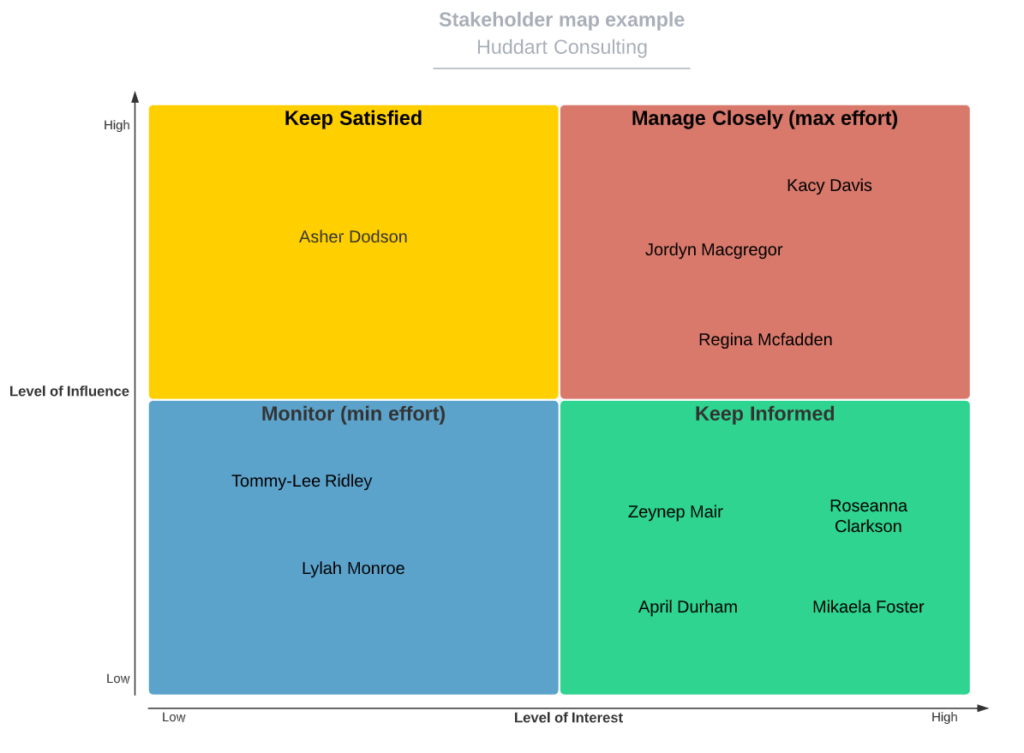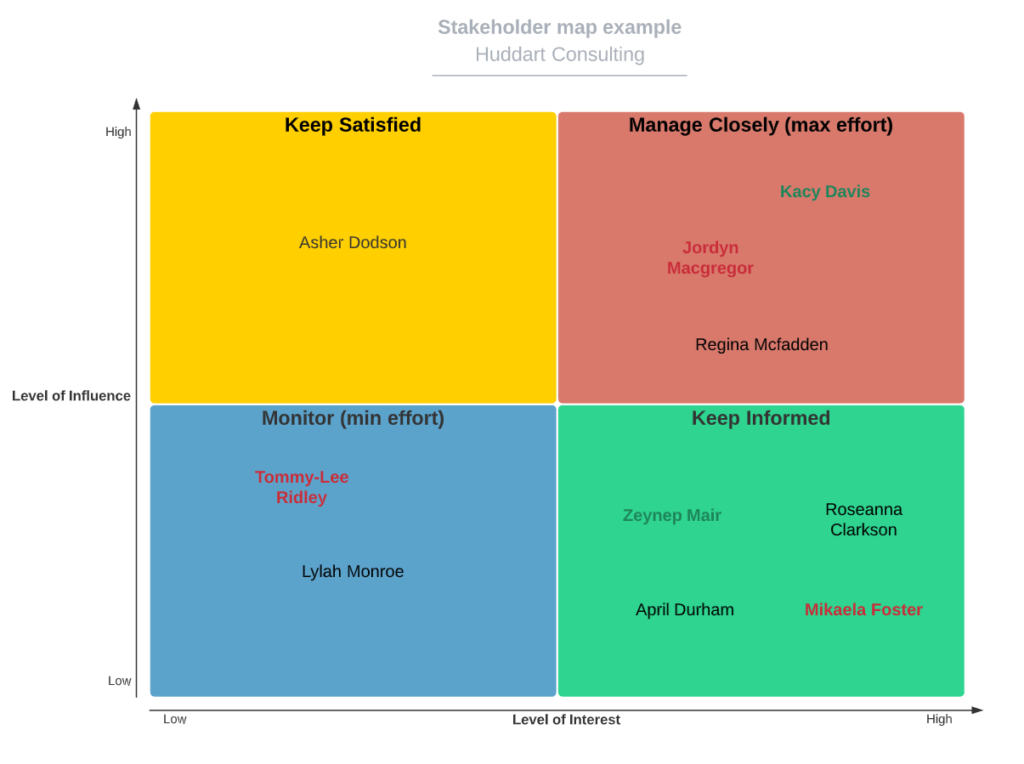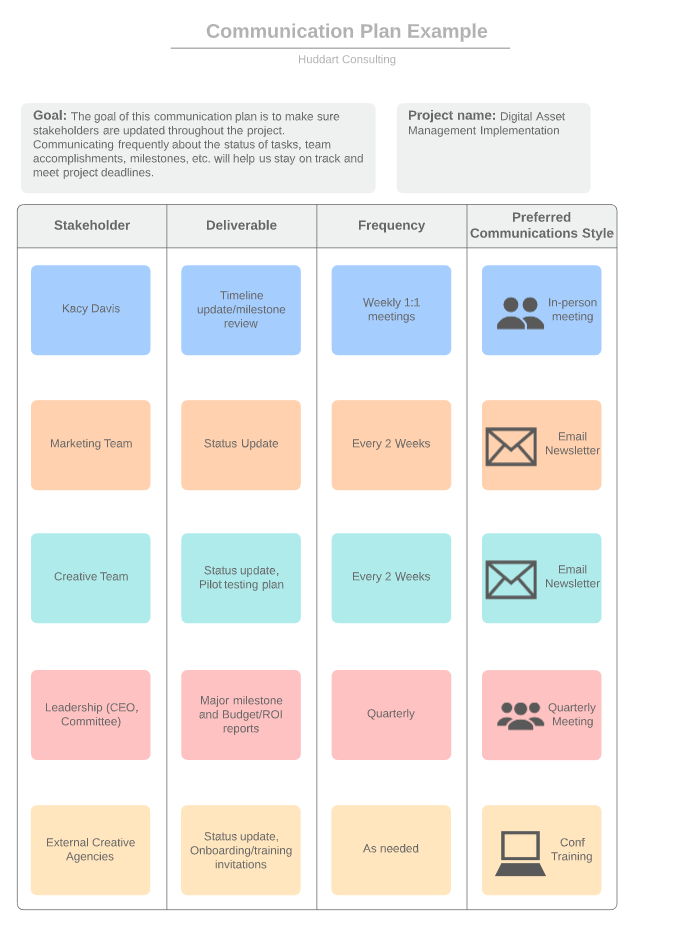You’ve identified a challenge or opportunity in your marketing teams. You want to build a business case for the business to invest in new martech, more resources, integrations, or whatever it might be that you’re after. Where do you start?
A great place to start is to identify your key stakeholders. But how do you do that?
Why does Stakeholder Buy-In Matter?
First off, let’s remind ourselves of why you need stakeholders on-side. Stakeholder buy-in is key to ensure that:
- your business case properly reflects the business user’s real needs as well as the business’s wider strategic objectives
- you have support for your business case and eventually support for the end result of this new investment
- your end users make time to engage in interviews, testing, proof-of-concepts, and pilots (without their commitment, your project will be delayed if not completely shelved)
- your business realises the full value of the investment you are about to make (remember, no matter how awesome your solution is, if no one is using it, it’s a failure)
Not only do you need people to support your business case, but you need buy-in from the right stakeholders to make an impact. Your stakeholder group includes anyone, at any level, who is affected by the change or decisions you are about to make. That may sound like a wide net, because it is. Your stakeholder group will be made up of cheerleaders who will support you no matter what, as well as influential senior leaders who may need to make difficult decisions about where to invest based on the business strategy and vision.
Why Use a Stakeholder Analysis Map?
This is where a stakeholder analysis map can help you to fully understand where you have strong relationships already formed and where you need to focus your energy to build trust and bring people on-side. Identifying your stakeholders “as an early step in your change project can help you avoid conflict and delays caused by inadvertently failing to involve key people.” (Take it from the NHS! https://improvement.nhs.uk/documents/2169/stakeholder-analysis.pdf).
This may sound tedious and your mind may be drifting to faint memories of unnecessary meetings, “too many cooks in the kitchen”, or the last time something went awry due to “design by committee.” Trust me though, investing time in building relationships early and communicating clearly throughout your proposed change project is the key to making this a success.
Building a stakeholder analysis map will benefit you by empowering you to:
- Gather valuable insight and feedback from key stakeholders
- Build trust by communicating clearly and involving the right people throughout the project
- Grow your team – if a key stakeholder fully understands what is required to make your project succeed, they can help you get the right people, resources, and skills
- Plan ahead – the more you can anticipate where the blockers might be along the project plan, the better you can plan ahead to tackle opposition or roadblocks
I’ve seen this go wrong too many times. If a key stakeholder in a senior position is not involved from the beginning they can often act as a blocker because they feel disrespected or they don’t know enough about the project to help move it forward.
Ok, back to the stakeholder analysis map…
Undertaking stakeholder analysis will enable you to:
- Identify your stakeholders or groups
- Prioritise your stakeholders
- Understand your key stakeholder’s reactions and motivations
- Build trust with your stakeholders
- Work well with your stakeholders
A stakeholder analysis map is used in business analysis, project management and change management practices, so you may come across this many times in your career.
Step 1: Identify your Stakeholders
Make a list of everyone that will be impacted directly by the change you want to make as well as anyone who may be indirectly affected. This can include customers, leadership, IT, investors, the government, managers, internal and external teams, colleagues, unions, the budget holder, suppliers, etc.
If you work for a large enterprise, I recommend making a stakeholder register that includes the names of the stakeholders, contact information, role/position, department, company, and anything else that will help you remember this stakeholder. This is useful because your stakeholders will change over time – there may be employee turnover, you may start working with new suppliers, and your target customers will evolve.

Step 2: Prioritise your Stakeholders
Add 2 columns to your stakeholder list – one for “level of influence” over your proposed project and “level of interest” in your proposed project. Then, assign a level from Low, Medium or High to each stakeholder (or stakeholder group).

Step 3: Create a Stakeholder Map Grid
Map your users onto this handy grid. Take a look at which grid square your key stakeholders fall into. This will show you which actions you need to take with them.

Now you have a good idea of what actions to take to get buy-in and how much effort to invest in stakeholders.
Manage Closely – people in this grid square are high power and very interested in your project. These folks are likely your key stakeholders, your business sponsor, and department leads who will look for maximum Return on Investment. Make sure these people are fully engaged and you put maximum effort into keeping them on-side.
Keep Satisfied – people in this grid square are high power, but possibly less interested. This might include members of the leadership team who are focused on the strategic objectives of the business, but probably don’t have time to get into details. Keep them satisfied with their level of involvement, but make sure you don’t overwhelm them with information.
Keep Informed – people in this grid square are interested in your project (maybe it’ll benefit them), but they have relatively little power of influence. These might end up being your primary end users, your SuperUsers, your cheerleaders! Support from these folks is key, so keep them involved, informed, and listen to their feedback.
Monitor – people in this grid square have low influence and low power. As much as you might like to engage equally with everyone, you will run yourself ragged if you try. Don’t invest too much effort in this grid square, but they are still your stakeholders, so check in once in a while and excite them by doing show & tells at major milestones.
(Need to create a visualisation, diagram, or process map quickly – I use a handy online template tool called LucidChart)
Step 4: Understand your Key Stakeholders with a 3D Stakeholder Map
Consider how your stakeholders (regardless of grid square) feel about your project. What is their attitude toward your project and what will they expect from you and this project? A few questions to consider:
- What motivates this stakeholder?
- Who can influence this stakeholder? (such as their line manager, CEO, family, etc.)
- Are they positively or negatively affected by this project?
- Do they have a financial interest in the success of the project?
- Are they the budget holders/financial decision-makers?
- Does this person have the power to instruct or cause change?
- Do they have the power to help or hinder the project?
- What is their preferred communication method (email, call, Slack note, etc.) and what information will they expect from you?
- What is their current attitude toward the work? Do they have all the information they need for a well informed opinion?
- If their current attitude is not positive, how can you build trust and support with them?
- If they are unlikely to buy-into your project, how can you manage any anticipated opposition?
Colour code your grid so that you can see the attitudes visually:
Green = cheerleaders/business sponsors/supporters
Black = neutral
Red = blockers/critics

This is called a Three Dimensional Stakeholder Analysis and it’s another way to know where to focus your efforts. Change Management is a continuous effort, but must be accomplished strategically. When you look at the above 3D Stakeholder Analysis, consider focusing on getting Jordyn on-side first. He’s your top priority and your most important key stakeholder. Remember to go back regularly and keep this analysis up to date as attitudes shift.
Step 5: Take Action, Create a Project Management Communication Plan
Well done, you’ve finished the Stakeholder Analysis, now it’s time to put everything into action. You can now use the stakeholder list, stakeholder map and 3D Stakeholder Analysis to create an effective communication plan for your project. A communication plan will be valuable for you to keep track of who you need to keep in the loop, which communication method to use, and how often stakeholders expect communications.
Plus, added bonus, your leadership will trust your Agile project management skills if you present a well thought through communication plan with “just enough” communication. Too much communication is a thing…a very annoying thing that causes many of us to ignore emails from repeat senders. Don’t let your comms go the way of the delete button! Less is more.

To learn more about best practice in change management for marketing technologies, please contact me through LinkedIn or via kristinahuddart@gmail.com to learn more and discuss your challenges.
